The Hindus – a brief history.
Summary: This is a brief introduction to my forthcoming book, The Hindus. I have tried to summarise the history fo Hindu religion – birth and development to present day status of the faith or religion. Is it a religion or a faith? I will let the reader decide for himself or herself at the end.
The Beginning:
There are 1.2 billion people in the world today (2023) who register their religion as Hindu. This forms about 15%of world population and the third largest religious group in the world. An alternative term for Hinduism is “Sanatana Dharma” or “eternal religion”. In Sanskrit it translates into “eternal way” or “eternal law”. This would translate into something which does not have a beginning or the end. Firm believers of Sanatana Dharma state that Hinduism does not have a beginning or an end. So, is there any point in looking for origins of a religion which does not have a beginning?
Physicists tell me that 13.8 billion years ago there was nothing. And when I say “nothing”, it means everything was missing. A question of “space-time” comes into being when anyone asks what was there before the Big Bang? The theories of relativity – General and Special theories – are difficult to comprehend for mortals like me. According to these theories, time is the fourth dimension and part of space. Whatever we see in the universe are the gravitational effects produced by the objects. There has always been a question as to what was there before the Big Bang. If we understand both the theories of relativity and accept the space-time continuum, there is no “before” the Big Bang. The time did not exist before the Big Bang. This concept of absence of time is difficult to comprehend to simpletons like me.
It is interesting that this concept was discussed in the ancient Hindu scriptures – the Rigveda. Nasadiya suktha or the Creation hymn in book ten of Rigveda talks about the creation and the existence of God. The Suktha says that there was nothing before, not even God. It goes so far to say that no one knows what was before as even God was created after the event. So, there might be some sense in an “eternal” religion!
We need to go into the origins of human beings to consider a religion which is said to be “eternal”. Humans did not appear on the scene till about three million years ago, evolved from our nearest cousins, the monkeys. Once the monkeys got on to two feet and started reaching out to the fruits/food on higher branches, the opposition of the fingers became a useful tool and somewhat of a necessity. That marks the arrival of the opposing thumb and there was no one who could match the new species. Humans have been one of the chief causes of demise of one species or another since inception and it went into another gear with the arrival of Homo Sapiens around 300 thousand years ago. One way or the other, Homo sapiens has been the cause of extinction all his cousins – Homo Habilis, Homo Erectus, Neanderthals, Denisovans, Homo Hiedelbergensis and several yet undiscovered human species over a very short period of three hundred thousand years.
Human species originated and developed independently in almost all the continents around the same time. However, Homo Sapiens appeared in East Africa and migrated to populate the rest of the world. This makes me wonder why? Is it because nature knew that we, as Homo sapiens, could cause extinction of other species more rapidly than anything else the nature could devise to keep an order in the life cycle of the planet. Maybe it is a check in the speed of destruction we are causing. Imagine the destruction if the Homo Sapiens had evolved in all the continents at the same time? The life on earth as we know might have been extinct by now.
The current accepted theory is that the modern humans migrated out of Africa around 60 to 80 thousand years ago – depending on which theory you believe in. Mostly accepted theory is that the humans crossed the Red sea at Bab-el-Mendeb from modern day Eritrea into Yemen at the southern tip of the Arabian continent during an inter-glacial period of low sea levels.
A group of them or a few groups of them eventually made it to the north-west of the Indian subcontinent – maybe even Indus valley. I suspect they were not surprised to find the archaic humans – Erectus or Neanderthals or Hiedelbergensis or Denisovians or even some as yet to be identified humans well established in the sub-continent. Particularly in the peninsular India. Their wanderings have been identified in two routes – one a sub-Himalayan route east and down the eastern archipelago towards Australia by hopping on hundreds of islands. Yet another group took to the coastal route along the west coast of the deccan towards the tip and back up the east coast. We did not have any direct evidence of archaic humans in India till the discovery of part of a skull in Narmada basin recently. It is not clear to which species it belongs to – just that it was not a Sapiens. It has been given a name of Homo Erectus Narmadensis. We have plenty of evidence of their presence in the form of tools they left behind. The artefacts underneath the huge deposit of ash deposited by the Toba eruption around 71 thousand years ago at Jwalapuram in Andhra Pradesh were left by the archaic humans. It is unlikely to have belonged to the homo sapiens as they did not reach India till about 60 to 70 thousand years ago. Unfortunately, no skeletal remains were found.
The magnificent cave paintings of Bhimbetaka in Madhya Pradesh are an ancient version of a social media trail of human beings dating back to around 35 to 40 thousand years ago. These paintings have been grouped into various periods depending on the drawings. We can see the first religious signs, at least in one figure of a man holding a trident – called a Nataraja or dancing Shiva.
The Vedic Age.
Continuing the story of humans in India, there have been controversies generated by the so-called Aryan invasion and or migration. So far, the theories and hypotheses were based on archaeological finds and linguistic philology. Over the last few years however genetic study has been used extensively to prove one side of the argument. The First humans came out of Africa and entered Indian subcontinent around 70 thousand years ago. These have been termed the First Indians by scholars for one reason or the other. We know that the female line is carried exclusively by the mtDNA (that resides in the mitochondria of everyone) and male line is carried by Y-DNA. Using this the geneticists have worked out ancestry of populations everywhere. Recent genetic studies based on mtDNA and Y-DNA have been used to conclude that the people who lived in Baluchistan – Mehrgarh to be exact – around 7000 BCE were immigrants from the Zagros mountains – i.e. from the Iranian background and probably migrants from the Levant. However, if one looks closely at the work that has been quoted – and accepted by the numerous extremely eminent scientists – many questions remain unanswered. There were only three skeletons of the thirty
or so humans found in the Zagros settlement who had any Indian genetic material (less than a third in each). The conclusion was that they were probably immigrants from Harappan country. For a scientist, accepting evidence for an estimated population of up to 5 million people from such a small number cannot be considered statistically significant by any stretch of imagination. There has not been any genetic study of a true Harappan individual so far – that is, until now. There has been genomic sequencing of a woman’s skeleton found in Rakhigarhi – which again would be considered anecdotal by many scientists. Coming to a more practical consideration, Zagros mountains lies in the western part of Iran and there are several mountain-passes along with the desert to cross to reach Baluchistan, the western part of the Indus valley civilisation. It is difficult to envisage the ancient pastoralists cross such formidable mountains and the great Salt Desert to reach the Bolan pass in Baluchistan. Which by the way was one of the killers of Alexander’s army in the fourth century BCE. Iranian plateau is not very conducive to east-west movement due to tall mountains traversing the land north to south cutting the vast desert into treacherous passes.
The current accepted theory is that the First Indians formed a DNA pool around 40,000 years ago as the Ancient Ancestral South Indians (AASI).
The Yamnaya steppe people migrated into the Indian subcontinent during the second millennium BCE and mixed with the hunter gatherers of India to form the Ancestral North Indian (ANI) and moving further south formed the Ancestral South Indians (ASI). The genetic evidence of pure ASI is not as prevalent in Indian mainland at present. Prevalence of ANI is higher in the upper caste Indians (39 to 71%). Pure ASI can be found in the Onge of Andaman group of islands which indicates that the First Indians peopled the islands long before further admixture could take place. The admixture of the ASI and ANI must have taken place around third millennium BCE and the admixture stopped during the Gupta rule of around 4th and 7th century AD due the endogamy and enforcement of social norms and varna system.
Next comes the evidence of philology or the study of languages. They have used philology as evidence to suggest that pastoralists (Yamnaya steppe) migrated from the Kazakh steppe down into South Asia and India – via the caucuses and the Kurgan culture of Shintasta and Yamnaya – the horse and chariot riding pastoralists. They have also been given the dubious honour of replacing the Europeans, at least twice during antiquity (this is being challenged by the current geneticists). They have been identified as using a Proto-Indo-European language – now extinct and considered to be the mother of all the Indo-European languages. This would include all the Latin-based languages of Europe and Sanskrit based languages of most of the northern Indian subcontinent (Hindi, Bengali, Guajarati, Punjabi and Marathi). Proto-Indo-European language divided into Indo-Iranian (moving south-east into Persia) and Indo-Aryan languages (moving south into the Indian sub-continent). The Dravidian languages of the Deccan have an origin from the language isolate, Proto-Elamite – originating in the western part of Iran – Elam. Not every one agrees with this theory at present.
The conclusion drawn by the philologists is that that the Indo-Aryans moving in from the steppe of Kazakhstan mixed with the remnants of indigenous people of Harappan civilisation to form the population of India we see today. This migration and admixture happened around the middle of the second to the middle of the first millennium BCE. The “new” group calling themselves “Aryans” have been identified by many experts as the authors of the Vedic corpus. There have been numerous objections to this hypothesis by several sections. They find it unpalatable to accept that the Vedic culture could have come from a people coming from outside India. Particularly as this would insinuate that the Vedic culture which is the backbone of Hinduism as we know of came from outside of the Indian subcontinent. Experts are beginning to accept that the Vedic corpus was probably composed by the aryans once they settled in the north-west of India – around Indus and Sarasvathi valleys.

The Harappan civilisation extended over 1.5 million square kilometres at its heyday and was bigger than the two contemporary civilisations – Egyptian and Sumerian – combined. We still don’t know exactly who they were. Many Indologists believe for one reason or the other that they were the people who composed the Vedic corpus and the progenitors of Hinduism. However, it is difficult to see how a highly evolved urban civilisation of Harappan empire would ignore to mention cities or any of the urban lifestyle in the vedic literature. Many on the other hand consider Harappan civilisation to be pre-Vedic. There are many features within the Harappan archaeology which can be traced to the present practices of the Hindus. This has been used by many as proof that the Vedic people and Harappan people were one and the same. Harappan civilisation reached its zenith during the urban phase from around 2600 BCE until its demise around 1900 BCE. There are many reasons for the downfall and disappearance of the civilisation and none of them are due to conflict. In fact, there are very few if any evidence of conflicts within the vast Harappan “empire” during its existence from around 7500 BCE to 1900 BCE. There is evidence of conflagration in a couple of cities such as Amri and Balakot. But these appear to be planned burning down of an old town to rebuild a new one. The Harappan civilisation went into decline from around 1900 BCE to 1600 BCE while the highly developed urban cities gave way to rural and agricultural economies of smaller communities. There is a gradual movement of population towards the Ganga-Yamuna doab and the appearance of the next urbanisation in the Gangetic plains.
The second millennium BCE is considered by many as the Vedic period and the period of migration of Indo-Aryan people into the Punjab. It corresponds to the period of Ochre Coloured Pottery. There are problems with the classic theory of migration of the Indo-Aryans through the second millennium BCE due to discovery of Copper Hoard culture of early second millennium BCE well east of the Aryan influence.
Archaeologically it belongs to the Cemetery-H culture in the region of Punjab and Haryana. By middle of second millennium BCE the Vedic people started to move eastwards onto the Gangetic plain. Many of the feature of Rigveda can be found in this region. Rigvedic society was largely tribal and pastoral groups, unlike the urban Harappans. According to Indologists the Bharata King Divodasa expanded his rule into the Punjab through Hindu Kush mountains defeating the Dasa king Shambara and destroying 99 of his fortresses. His descendant, King Sudas is the protagonist in the Battle of ten kings. This battle, made up of two segments, one on the banks of River Ravi and the other on the banks of River Yamuna, is considered as the third epic of India by many. The Vedas do not comment much about the country south of the Vindhyas apart from journey of sage Agasthya. The authors of the Rigveda considered nothing of importance lay south of the Pariyatra mountains (Vindhyas).
The tribal groups eventually coalesced to form kingdoms, republics and realms. Kuru kingdom is probably the first large kingdom to take shape during the Vedic period. It has been placed from around 1200 BCE. It corresponded with the beginning of the Iron age in India. Meteoric iron has been found to be used during the second millennium BCE, but mined Iron much later.
It is generally accepted that the Kurus organised the Rigveda into the ten-book format and also the developed the Srauta rituals.
It is believed by many that the Aryans composed the four major Vedas and other scriptures as they settled down in the Punjab-Haryana region. As the northern India started to fill, the Vedic religion developed into a composite culture mixing with the First Indians already well established in the Ganga-Yamuna doab. The process appears to have been peaceful as there is no evidence of any major conflagration in the region so far. It was only a matter of time before our ancestors moved down south over the Pariyatra mountains down south. Vedic religion mixed with the pre-existing shamanic religion of the South India. While the Aryans adapted many of the tenets and icons of the south – Gods such as Rama, Krishna and Ganesha etc, the locals adapted the Vedic rituals, language and practices. Over a period, the Vedic Gods such as Indra, Agni and Varuna were relegated from the mainstream. The Aryan language of Sanskrit absorbed many of the language nuances from the south and the successors of Sanskrit – Prakrit, Pali etc took on many of the Dravidian language traits, words etc with eventual development of North Indian languages of Hindi, Bengali, Marathi, Guajarati etc.
Evidence in Tamil Sangam literature gives us clue to the nature of religion in the south before the Aryans and as the Aryans moved in. Earliest evidence within the Sangam literature is that of shamanic religion with God Shiva and Muruga as the main deities. The religious practices were varied between the regions, but mainly centred around the God Muruga.
Sangam literature dating back to late first millennium BCE and the beginning of Christian era, does talk a lot about the sage Agasthya as bringing knowledge of Vedic religion and God Shiva to the Kingdom of South. The experts take this to be evidence of the Aryans moving down south and gradual aryanisation of the south.
Next comes the period of the Puranas and the two great epics of India – Mahabharat and Ramayana. They equate to the archaeological periods of Painted Grey Ware and Northern Polished Black Ware cultures. The system and practices of the present-day Hinduism was probably set and finalised during this period. This would be the period of Mahajanapadas – the great kingdoms. The term Hinduism does not appear in either of the great epics of India or any of the Vedic texts. The first mention of Hindu is in a Persian inscription (Behistun) by Darius in 6th Century BCE. He was describing the people living in the region of River Sindhu – “Hindavan”.
The Persian and Macedonian soldiers who accompanied Alexander during the conquest of India in fourth century BCE called the people living on the banks of River Sindhu as “Hindoos”. The term Hindu doesn’t enter the literature till about eleventh century AD.
Whether the Harappans are the authors of Vedas or the immigrants from the Kazakh steppe is a question that will linger on until the Harappan script is deciphered. Despite the best effort of the experts the script has remained obscure. One thing that has been accepted is that the Sanskrit, an Indo-European language is the mother of most of the languages in the northern part of India whereas Dravidian languages originated from the proto-Elamite language (now extinct) of Elam (South eastern Iran). It is possible that the Vedic culture which was widespread in the northern countries influenced the Dravidian languages of the south and vice versa. It is also possible that the Vedic culture of the Aryans intermingled with the shamanic religion of the Deccan as we can see elements of both the ancient Vedic culture and regional practices of the Deccan in the present-day Hinduism. The Vedic Gods – Indra, Varuna, Vayu and Agni – do not have the same importance in the present-day Hinduism. And the present-day icons of Hinduism – Rama, Krishna and Shiva either do not get mentioned at all or only get a passing mention in the Vedas. Several of Sanskrit words or derivatives are found in the Dravidian languages and vice versa. This would lead us to assume that there has been a significant admixture of the classic Vedic religion and the regional religions of the south to bring us the modern Hinduism.
According to the Supreme Court of India,
“Unlike other religions in the World, the Hindu religion does not claim any one Prophet, it does not worship any one God, it does not believe in any one philosophic concept, it does not follow any one act of religious rites or performances; in fact, it does not satisfy the traditional features of a religion or creed. It is a way of life and nothing more”.
Sanskrit sources differentiated Vaidika, Vaiṣṇava, Śaiva, Śākta, Saura, Buddhist, and Jaina traditions, but they had no name that denotes the first five of these as a collective entity over and against Buddhism and Jainism.
Period of Reformation:
Reformation of Christian theology in 16th century Europe marked the end of the Middle Ages. Classical period of reformation in Hinduism is ascribed to 19th century greats such as Raja Ram Mohan Roy (Bramho samaj) and Dayananda Saraswathi (Arya samaj). These were linked to the colonialisation of India by the British and had as much to do with Hindu revival as reformation of Hinduism as a religion. However just like the reformation that shook the religious hierarchy in Europe, there was a period of reformation in India starting around 8th century BCE which challenged and almost threatened the existence of the Hinduism as a religion. The Vedic religion had become regimented, and Brahmin centred with intolerance, particularly the “lowest class”, the Shudra came to be resented by many. The Varna system that gets mentioned in the last book of the Rigveda in Purusha sukta is turned into a class system. Manusmriti, origins of which is not entirely certain, categorises people into four classes, based on their birth. A Brahmin is placed at the highest level of the ladder, followed by Kshatriya (warrior class) and Vysya (traders, farmers etc) with Shudra at the bottom of the ladder. Intermingling of classes was strictly forbidden. The resentment this generated among the “lower classes” gathered momentum eventually resulting in protestant religious sects. This gave rise to several protestant sects such as Jainism, Buddhism, Charvakas and Ajivikas. The first two being theistic and the latter two atheistic. There were several other minor sects which came and disappeared without any residue.
Jainism: Vardhamana Mahavira (24th Jain tirthankara) propagated this sect mainly with a view of “Ahimsa” – as a protest against the widespread sacrifices that were taking place in the name of religion. He preached nonviolence against all animals and banned killing of any for both religious purposes as well as meat eating.
He attributed the teachings of Jainism to Parshvanatha from 9th century BCE as the 23rd Tirthankara, with the first tirthankara, Rishabadeva to several million years in the past. Jainism took root and expanded rapidly over the 8th and 7th century BCE with several of the kings following Jainism. The Jain kings supported and nurtured many in the fields of art, architecture, literature and music. The period saw an explosion of universities which went on to become world centres of higher education attracting eminent students from across the globe. Universities were established and grew under the protection of the Jain kings. The universities of Nalanda and Taxila prospered under the royal protection with eminent teachers and scientists, not only learning but also teaching. The subjects of medicine, astronomy, mathematics and languages were taught. Some of the famous teachers such as Huangzen, Alberuni not only
Buddhism: Around the same period Gautama Buddha was born as a prince who forsake all his comforts on seeing the suffering of the masses, particularly the poor and disenfranchised. Buddhism spread rapidly within India during the 6th and 5th century BCE and soon spread abroad to China all the way up to Japan in the north and the East Indies in the south.
It attracted foreigners with a simple message. Several Greek kings promoted Buddhism as state religion and the Buddhist iconoclast began to appear around that time – stupas and arches. Monasteries were built to study and propagate Buddha’s teachings as well as promote learning. There are mainly two types of sects within Buddhism – Theravada (Hinayana) and Mahayana. Theravada school believed in Nirvana or attainment of moksha from the struggles of life, and it spread outside India, mainly within the southern countries including Srilanka, Mayanmar, Cambodia and Thailand. Mahayana Buddhism believed in liberating all the population and it spread outside India in northern countries such as China, Japan, Nepal, Taiwan and Korea. Nowadays Buddhism has become the fourth largest religious sect in the world. Several of the Indian kings became Buddhists and helped in the spread of the religion. Emperor Ashoka was one of the earliest kings who sent emissaries across the globe to spread the teachings of Buddha. Many Chinese monks travelled to India to study the teachings of Buddha and translated them into Chinese. Silk road helped the spread of Buddhism to a large extent.
The rituals of Vedic religion were almost entirely centred around a fire alter – Agni the purifier and no mention of temples are made in any of the Vedas. The Greek Buddhists introduced the stone sculptures reminiscent of the Greece they had left behind. Introduction of Gandharan culture shows a mixture of Greek and Indian elements in their monuments and icons of Buddha. Chandragupta, the founder of the greatest empire India has ever seen, the Mauryan empire, followed Jainism. In fact, he gave up the comforts of the palace towards the later part of his rule and travels south to Shravana Belagola where he renounced everything, take Sallekhana and dies. His grandson, Ashoka after seeing the senseless slaughter after the Kalinga war renounce violence and becomes a Buddhist. His edict in stone is spread across the Indian subcontinent speak volumes of his greatness and also gives an indication of the spread of his empire. The great Mauryan empire came to an abrupt end with the killing of Brihadratha by his general, Pushyamitra Shunga. He started the Shunga dynasty and was a staunch Hindu. However, he did not suppress any religion and Buddhism continued to prosper, particularly in the north of the country.
Charvakas is one of the atheist sects born as a protestant group against Brahminism. They rejected the authority of Brihaspati is often considered as the originator of the Vedas and Hindu rituals. Charvaka philosophy. The original texts of teachings are lost and all the information about the sect is from secondary sources – from Jain and Buddhist writings. They did not believe in God as such. They did not believe in afterlife or karma.
Eat, drink and be merry appears to have been their philosophy. The principle of Charvakas is essentially scepticism. Any inference that is derived by a set of observations should also include doubt and that inferred knowledge is conditional. And could be wrong. It is generally believed that the Charvaka philosophy gained momentum during the 7th century BCE, there are several indicators to suggest that there might have been elements of Charvaka philosophy during the Vedic period. The system gradually disappeared around 13th century CE with revival of Hinduism.
Ajivikas was another major sect which was formed as a protest against the rigidity of Vedic religion.
They do not believe in God and existence of afterlife or reincarnation and refused the authority of the Vedas. They believed in fatalism. Everything that is happening, happened and might happen in the future is predetermined. There is no such thing as cause and effect in life. One lives for today and not worry about one’s actions in the future. Their theory of atoms proposes that everything is made of indivisible atoms which are preordained by cosmic principles. Several of the ancient Hindu Kings supported this sect, including the Mauryan emperor, Chandragupta’s son, Bindusara. They get a mention in Ashoka’s edicts. Makkhali Gosala was a disciple of Mahavira for a while until he decided to start his own sect and teachings. Primary sources of this sect are also lost and our knowledge of the Ajivikas is mainly from secondary sources in Buddhist writings. Ajivikas spread quite widely in the Northern India in the 8th to 6th Century BCE and survived till about 12th century CE in the south, particularly in the Karnataka.
The Vedic religion prospered under almost all the rulers during the second half of the first millennium BCE. Main threat to its hegemony came from the two – Jainism and Buddhism. Jainism did not spread outside the country whereas Buddhism spread everywhere outside India by the Buddhist monks travelling abroad with their teachings and monks coming from abroad to learn Buddhism from some of the biggest universities of learning in the world – Nalanda and Taxila.

With most of the country being under the influence of Buddhism and Jainism, Hinduism was on the vane. Vast numbers of schools, monasteries, temples and religious centres were built by the Jain and Buddhist kings during this period. Temple building started as rock cut edifices later to develop into stone-built temples. In fact, some of the first temples were nothing but glorified caves with religious icons within them. But religious tolerance was practiced by most of the kings and thus Hinduism survived despite being not a state religion in any of the major kingdoms of India during the latter half of first millennium BCE. It was not until the period of the Guptas during the fourth century CE when Hinduism saw a resurgence. Guptas saw a resurgence of Hindu religion, architecture and literary works starting with the great Chandragupta I and achieved a pinnacle of power under Chandragupta II (Vikramaditya). Hinduism as a religion saw a transformation from Fire altar-based ritual to temple-based worship. While great Yajnas such as Ashwamedha continued, the temple architecture matured from rock cut stone temples to architectural marvels. Two main forms of architectural schools developed – Mathura and Gandhara styles. Gandhara style inculcated many of the Greek architectural designs. Literature saw some of the greatest stalwarts such as Kalidasa and Vatsyayana, mathematicians such as Aryabhata and Varahamihira, and medical genius in Charaka and Sushruta. Many consider that Manusmriti saw its final version during this period and maybe paved a way to rigid classification of four varnas or castes as it came to be termed later. The great epics of Ramayana and Mahabharat saw their final versions along with many variations. One might say that the golden age of the Guptas saw the shaping of Hinduism of what we largely see today. Transformation of Vedic religion to Hinduism went on over a period of at least three hundred years.
While the Guptas saw their “golden age” in the north, the Vakatakas ruled the south, except for the extreme southern counties which were ruled by the Pandyas, Cholas and Gangas. Jainism and Buddhism took a foothold in the south as well under the protection of these rulers. However, religious tolerance was the order of the day and other religions prospered too.
The three great teachers of Hinduism – Shankaracharya (8th century CE), Ramanuja (12th century CE) and Madhvacharya (12th century) reformed Hindusim and brought it back from virtual extinction. They are considered as the three pillars of present day Hinduism. Their philisophies rationalised the Vedic thought and gave a direction to the Hindu followers. Advaita (no-dualist) philosophy of Shankar set the tone for the future of Hindu thought and it is still being follwoed by a large number of people. Dvaita philosophy (dualist) of Madhvacharya and the Vishishtadvaita (qualified non-dualism) of Ramanuja argue towards the presence of Atman and Brahman as seperate entities.
Sikhism: 15th and 16th centuries saw the development of Sikhism which followed some of the tenets of Jainism and Buddhism and discouraged idolatry and casteism of Hinduism. It grew very rapidly during the early centuries and has spread across the globe mainly through migration.
Influence of Islam.
There have been Islamic assaults from as early as 8th century CE, particularly into areas of Afghanistan and Sindh. But the earliest significant effect was by the numerous invasions by Mahmud of Ghazni – 17 times to be exact. His idea was pillaging the rich Hindu Kingdoms of India and not ruling or spreading the Islamic religion. The Delhi Sultanate was established in 13th century but did not last long. It was not until the 16th century when Babur came to India from Samarkand and established the Mughal empire. This saw the establishment of an empire of unequalled wealth and at one time was responsible for over a quarter of the world’s GDP. The decline of the Mughal empire started with Aurangzeb and disappeared into ignominy. Aurangzeb was a religious fanatic who tried to suppress all religions other than Islam and almost succeeded.
Hinduism has been evolving since then and has survived despite coming under severe strain under the assault of foreigners – the Huns, Scythians, Turkics, Persians and the Arabs. Of these, Mughals were the most successful, ruling the country under a vast empire for over two hundred years. They succeeded in unifying a country divided by numerous petty kingdoms fighting among themselves. This happened at the cost of suppressing Hindus and spreading Islam across the country.
They succeeded in controlling the country north of the Vindhyas up to Afghanistan with southern spread resisted by powerful southern Kingdoms such as the Vijayanagar empire. Islam did make some inroads into the south though the Bahamani Sultanates which were resisted by the Vijayanagar Empire, Cholas and the Pandyas. Hindus and Hinduism survived despite such onslaughts from enemies within and without, over the millennia. During the process Hinduism, as we know of it today, evolved from a three and a half thousand-year-old (at least) Vedic religion. While some Sanatanis might want to consider it to be a “Sanatana Dharma” or religion with no beginning or end, it is fair to say that the Vedic religion developed and matured into the Hindu religion as we know of today over the last three thousand years.
Coming back to the question – where did the Hindus come from? – the answer is not simple. My conclusion would be that the Vedic religion of the Aryans amalgamated with the regional culture of the First Indians which pre-existed in the Indian subcontinent to produce the modern Hindus. As to who these Aryans were, is still controversial especially with the upsurge of hindutva followers and it is for a different article.
This is a very brief attempt at a vast subject of Hinduism. If this has sparked an interest in the reader there is an awful lot of nooks out there to do research. My own book, “The Hindus: A brief history” is due for release in 2025.

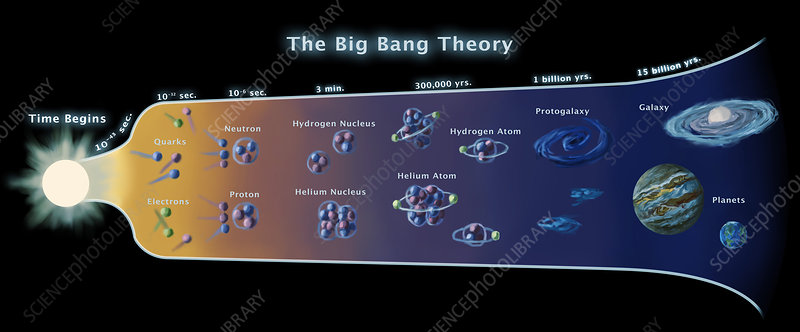

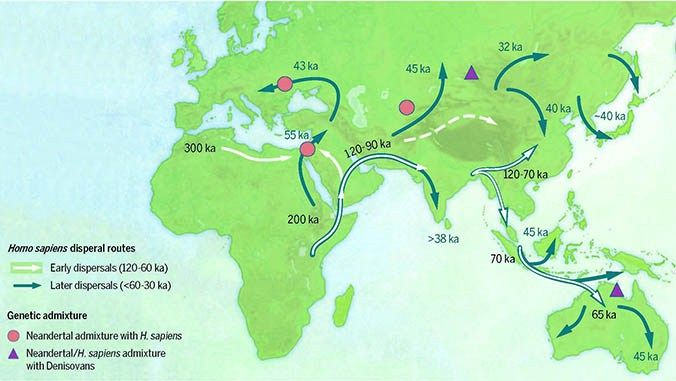




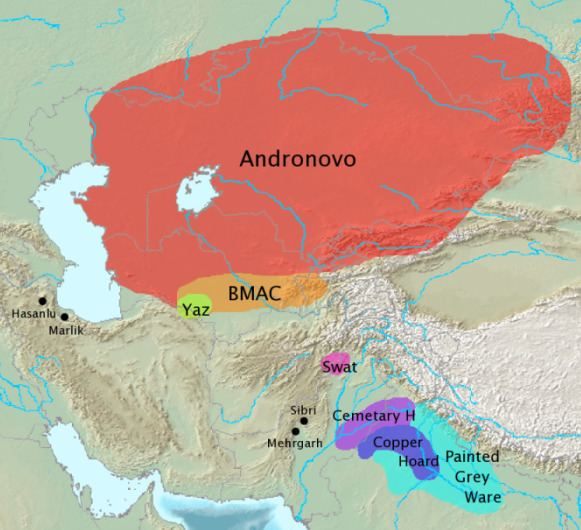
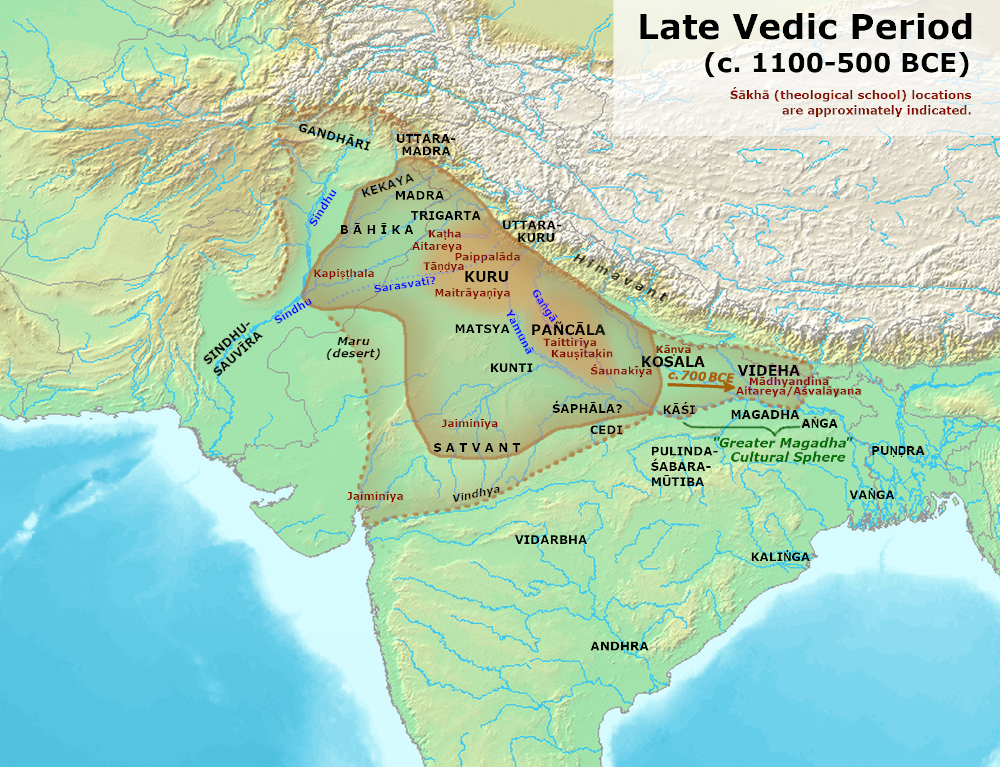
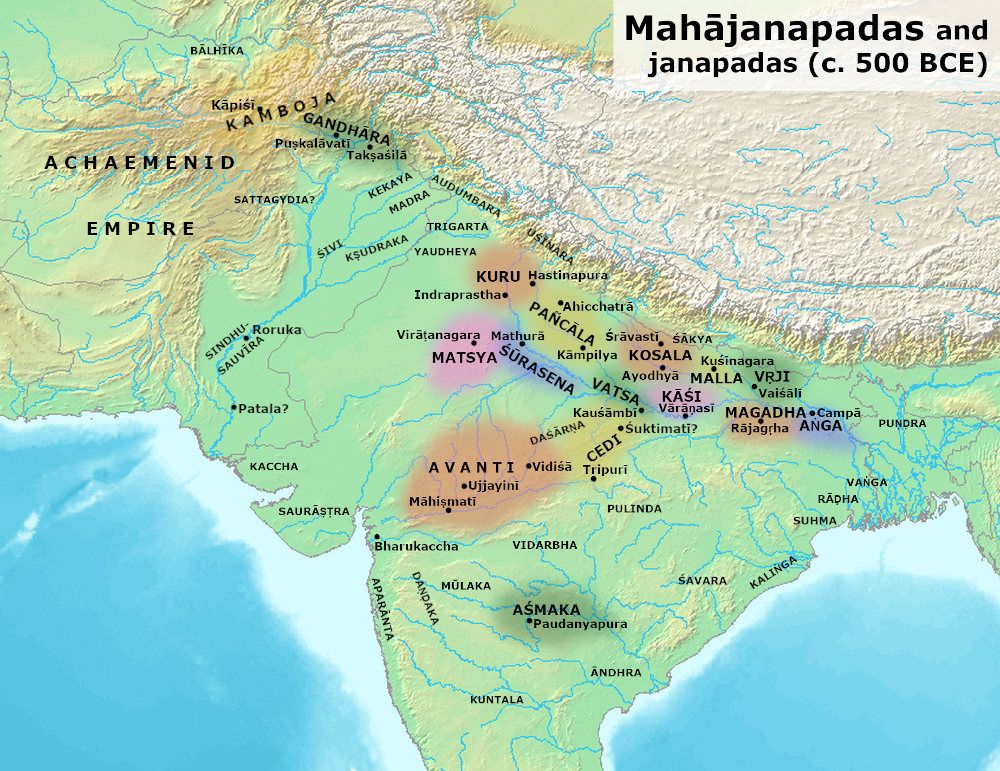


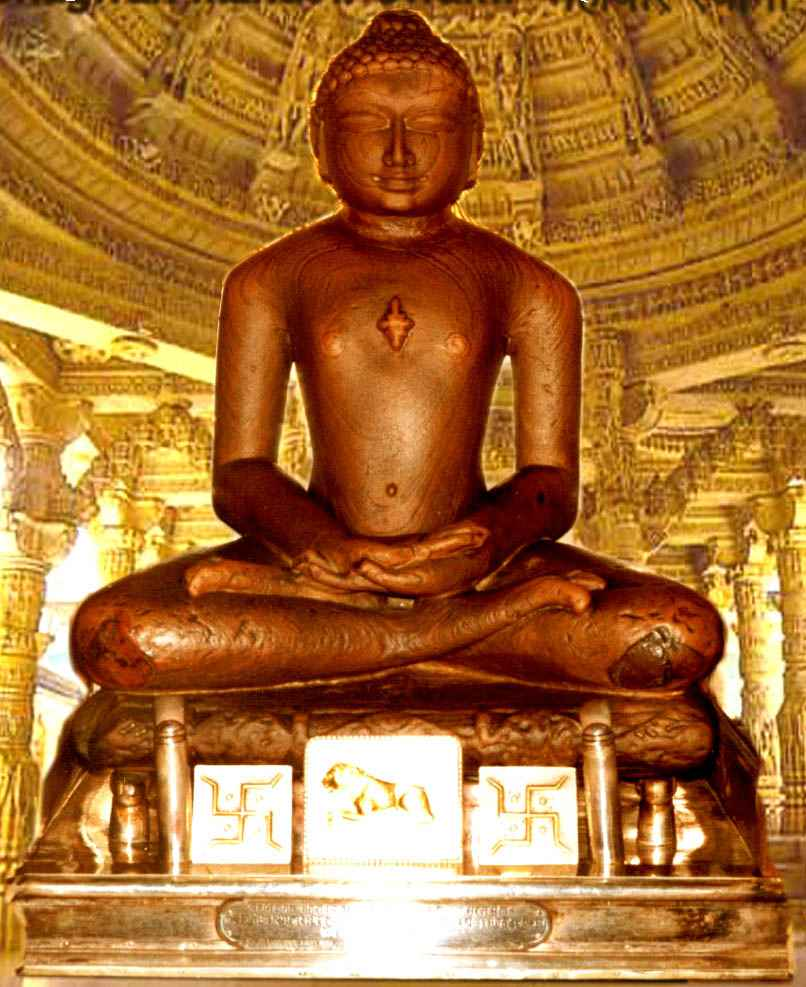

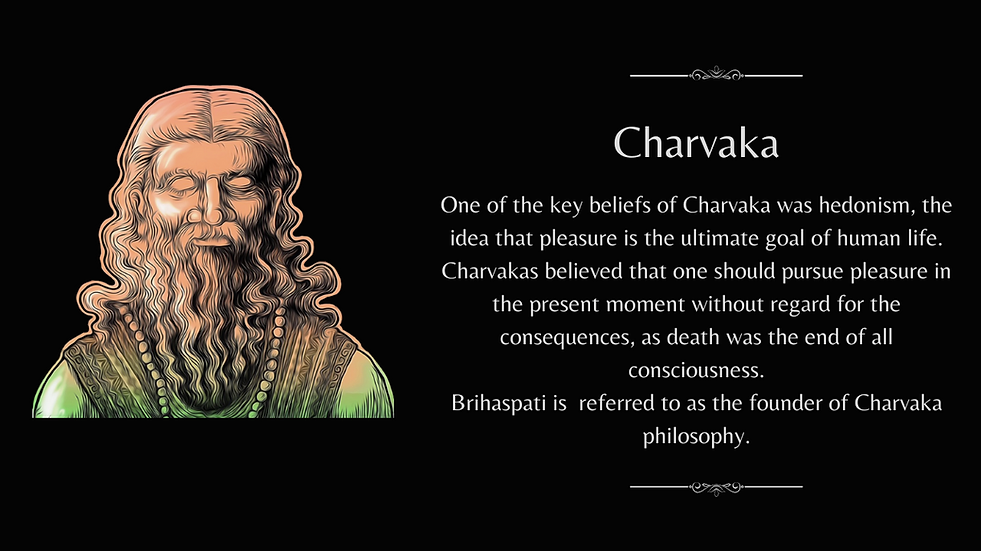
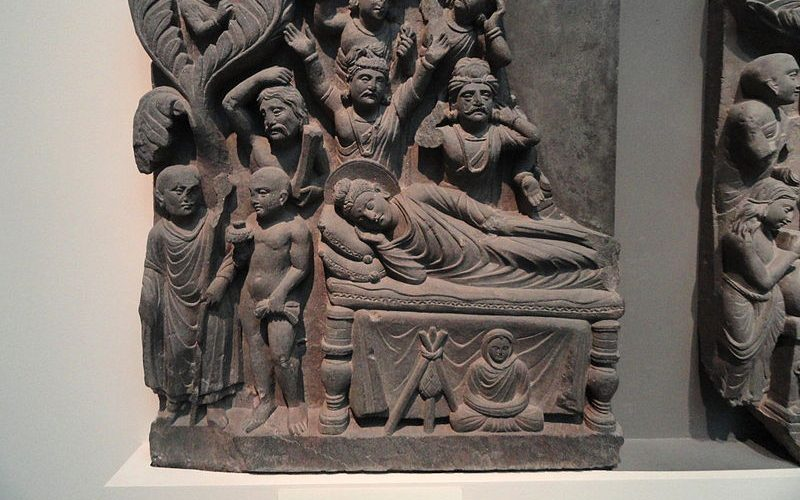
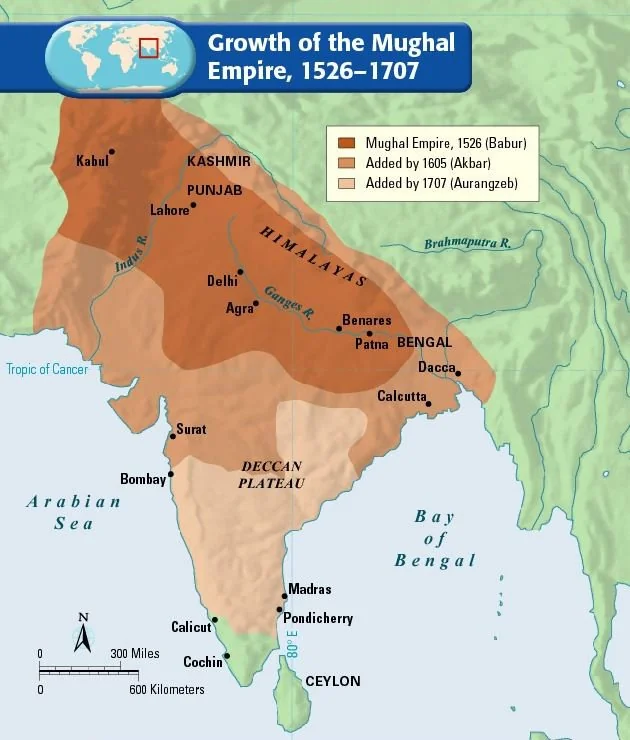
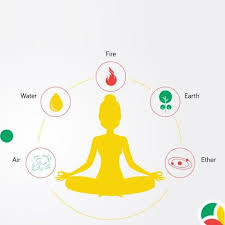 allow the five energies of our body to merge into the cosmic energy. The ritual following that is to help the onward journey of the soul towards Bramhan. For a scientist who seeks tangible evidence for everything, this was difficult to absorb. He said I could find the evidence in the Vedas.
allow the five energies of our body to merge into the cosmic energy. The ritual following that is to help the onward journey of the soul towards Bramhan. For a scientist who seeks tangible evidence for everything, this was difficult to absorb. He said I could find the evidence in the Vedas.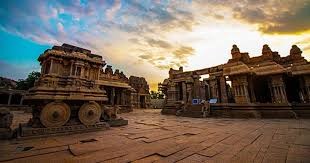 Sayana was probably the first one to write a treatise on Rigveda during 14th century in the court of Vijayanagara Empire of Bukka. It has been used as basis of many works by noted researchers like Max Muller and Ralph Griffiths. Since then there have been numerous attempts at deciphering these vast treatise – probably the largest scripture in the world.
Sayana was probably the first one to write a treatise on Rigveda during 14th century in the court of Vijayanagara Empire of Bukka. It has been used as basis of many works by noted researchers like Max Muller and Ralph Griffiths. Since then there have been numerous attempts at deciphering these vast treatise – probably the largest scripture in the world. world of physics upside down.
world of physics upside down.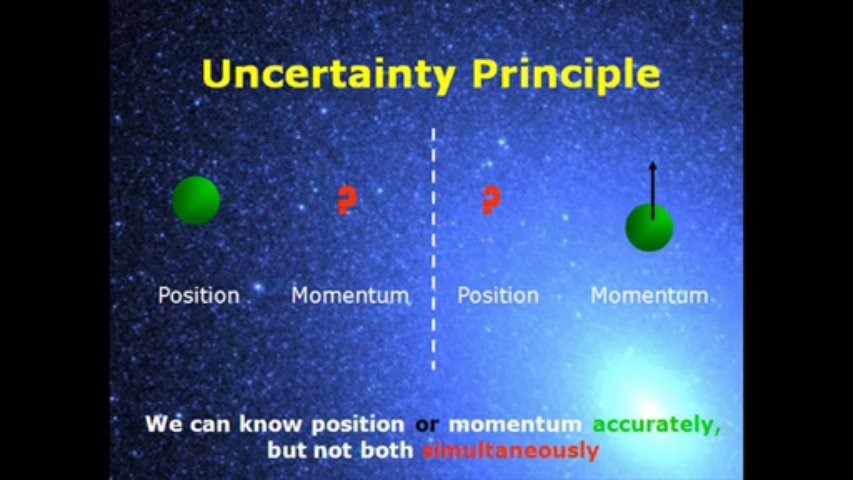 Werner Heisenberg who described his famous Uncertainty Principle in the 1920’s said “Quantum theory will not look ridiculous to people who have read Vedanta.”
Werner Heisenberg who described his famous Uncertainty Principle in the 1920’s said “Quantum theory will not look ridiculous to people who have read Vedanta.” no matter where they are – both space and time wise. It could be few seconds or million years and also few millimetres or several light years apart. This was demonstrated by a theoretical experiment devised by three scientists – Einstein, Podolsky and Rosen – called the EPR experiment in 1934. They showed that there is an “entanglement” of particles, which stays with them wherever they are. This stayed a theoretical experiment until technology improved enough to measure the characteristics of particles some 50 years later. In simple words two particles being measured do not have a specific state until they are measured. If there are two particles A and B in an “entangled state” even for a brief period, it did not matter how far they move away from each other they will be in a complementary state, whichever it may be. If particle’s state is being measured and particle A shows an upward spin, particle B will be in a downward spin, no matter how far away they are from each other. What does this mean for us? Again in simple words, everything in the universe “knows” everything else in the universe.
no matter where they are – both space and time wise. It could be few seconds or million years and also few millimetres or several light years apart. This was demonstrated by a theoretical experiment devised by three scientists – Einstein, Podolsky and Rosen – called the EPR experiment in 1934. They showed that there is an “entanglement” of particles, which stays with them wherever they are. This stayed a theoretical experiment until technology improved enough to measure the characteristics of particles some 50 years later. In simple words two particles being measured do not have a specific state until they are measured. If there are two particles A and B in an “entangled state” even for a brief period, it did not matter how far they move away from each other they will be in a complementary state, whichever it may be. If particle’s state is being measured and particle A shows an upward spin, particle B will be in a downward spin, no matter how far away they are from each other. What does this mean for us? Again in simple words, everything in the universe “knows” everything else in the universe.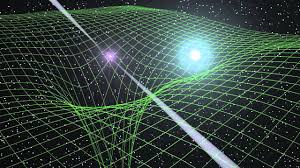 out of this tiny particle at the Big Bang 13.6 billion years ago broke up into matter and antimatter. This is where the problem starts. In theory this should produce equal amounts of matter and antimatter. But. if there was equal amount, there would be nothing as they would cancel out each other. But there is significantly more mater than antimatter in the universe. This is further complicated by the Dark matter and Dark energy.
out of this tiny particle at the Big Bang 13.6 billion years ago broke up into matter and antimatter. This is where the problem starts. In theory this should produce equal amounts of matter and antimatter. But. if there was equal amount, there would be nothing as they would cancel out each other. But there is significantly more mater than antimatter in the universe. This is further complicated by the Dark matter and Dark energy.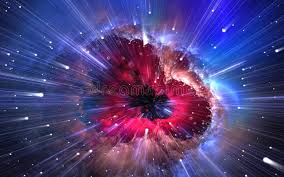 The amount of gravitational field that has been detected far outweighs the amount of matter (the only thing that can produce gravity) that is present in the universe. Even counting for adding “Dark matter” into the equation does not add up to the amount of gravitational force that is present. There must be something else that is producing this enormous amount of gravitational force in the universe. So far scientists have not been able to explain the cause for this.
The amount of gravitational field that has been detected far outweighs the amount of matter (the only thing that can produce gravity) that is present in the universe. Even counting for adding “Dark matter” into the equation does not add up to the amount of gravitational force that is present. There must be something else that is producing this enormous amount of gravitational force in the universe. So far scientists have not been able to explain the cause for this.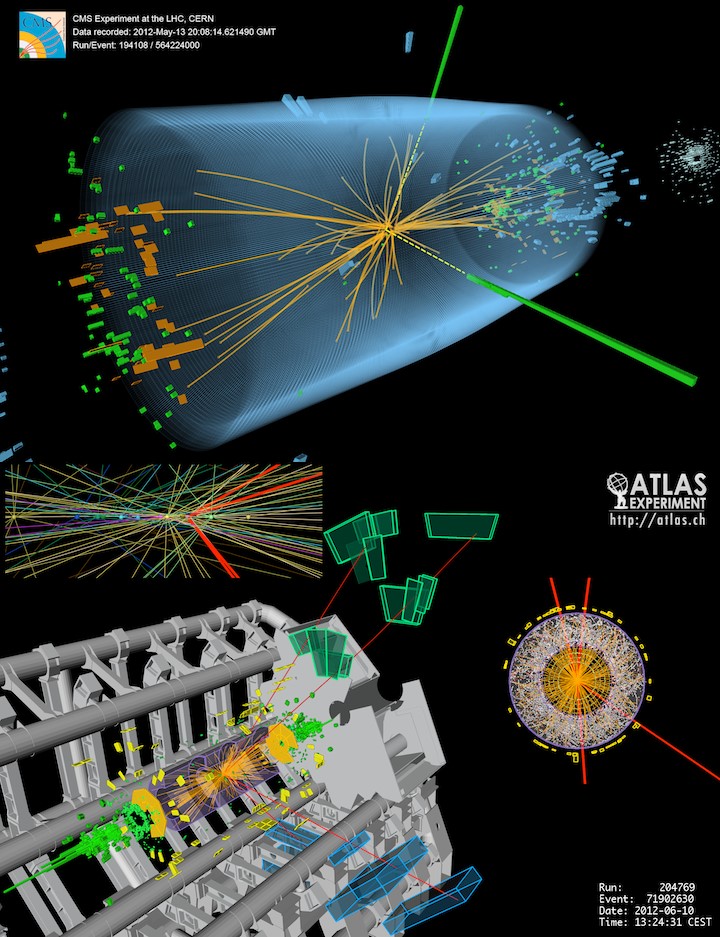 e the Higgs boson is often called the “God particle,” after the title of Nobel physicist Leon Lederman’s The God Particle: If the Universe Is the Answer, What Is the Question? Lederman claims that the discovery of Higgs boson is crucial to understanding the structure of matter of essential particles and hence the origin of Universe itself. Lederman regretted calling it the God particle due to its connotations but was forced to use it by his editor. His name for the book was actually “Goddamn particle”!
e the Higgs boson is often called the “God particle,” after the title of Nobel physicist Leon Lederman’s The God Particle: If the Universe Is the Answer, What Is the Question? Lederman claims that the discovery of Higgs boson is crucial to understanding the structure of matter of essential particles and hence the origin of Universe itself. Lederman regretted calling it the God particle due to its connotations but was forced to use it by his editor. His name for the book was actually “Goddamn particle”!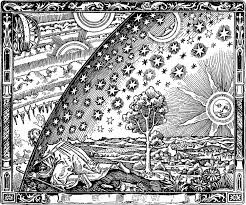 is part of the 10th book, begins with “There was neither non-existence nor existence then.” This is no different to the principle of the Big Bang theory, there was nothing before and everything started from a singularity. Let us get to that a later.
is part of the 10th book, begins with “There was neither non-existence nor existence then.” This is no different to the principle of the Big Bang theory, there was nothing before and everything started from a singularity. Let us get to that a later.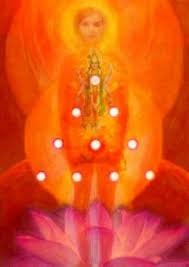 s everything conscious and unconscious universally. Creation is described to have started with the origination of Virat, or the cosmic body from the Purusha. I presume this must be the same as Bramhan. In Virat, omnipresent intelligence manifests itself as a “man”. In the verses following, it is explained how the rest of the universe, sun, moon, sky, seas, animals and plants were created by “sacrifice of the Purusha”. Through this creation, underlying unity of human, cosmic and divine realities is explained, for all are seen arising out of the one and only Purusha.
s everything conscious and unconscious universally. Creation is described to have started with the origination of Virat, or the cosmic body from the Purusha. I presume this must be the same as Bramhan. In Virat, omnipresent intelligence manifests itself as a “man”. In the verses following, it is explained how the rest of the universe, sun, moon, sky, seas, animals and plants were created by “sacrifice of the Purusha”. Through this creation, underlying unity of human, cosmic and divine realities is explained, for all are seen arising out of the one and only Purusha.